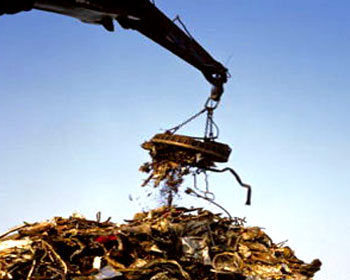 Metal scrap heap
A large disc like electromagnet suspended on chains & manipulated by a crane. The magnet is used to separate & lift heavy objects from among the waste.
Metal scrap heap
A large disc like electromagnet suspended on chains & manipulated by a crane. The magnet is used to separate & lift heavy objects from among the waste.
 Click to watch video lesson
Click to watch video lesson
In our childhood, most of us might have come across a few objects that attracted pins, needles, blades, etc. We realized that they did not attract things like paper, wooden blocks, plastic scales, etc. Later, we learnt that such objects belonged to a class called magnets. In this chapter we will study the properties of magnets.
Naturally occurring magnets such as loadstones have been known to human being for more than two to three thousand years. Magnets are substances that attract some other substances and are generally made up of iron. Nickel also shows magnetic behavior some times. Alloys of Fe–Ni and few other elements added to them show magnetism. Some rare earth elements also show high magnetism. Alloys of samarium–cobalt are used as permanent magnets in many laboratories.
The idea that a magnet produces a magnetic force field in its neighbourhood is perhaps easier to comprehend than the concepts of gravitational and electric force fields. If we try to bring two like magnetic poles together, we see the repelling force between the two even when they are at some distance from each other. We observe that freely suspended magnets come to rest along the north–south direction due to the effect of the earth’s magnetic field.